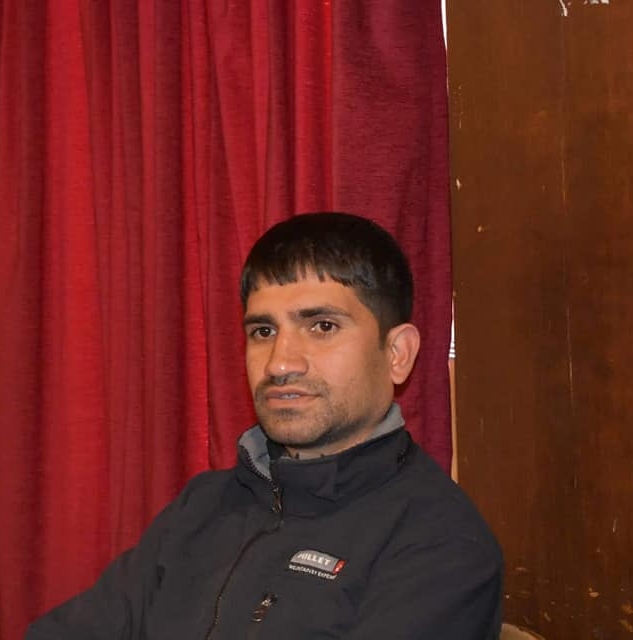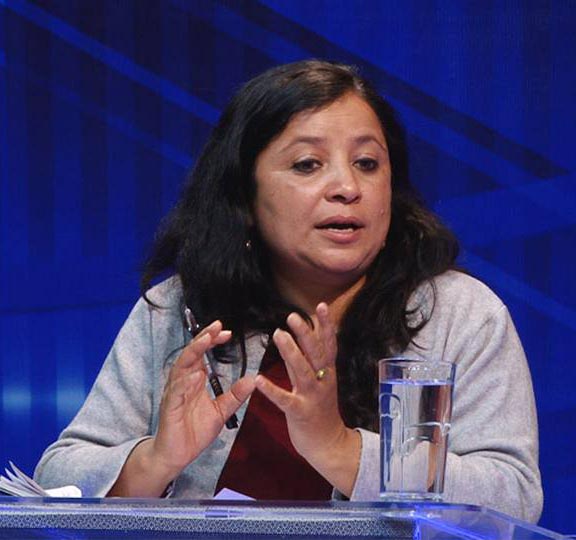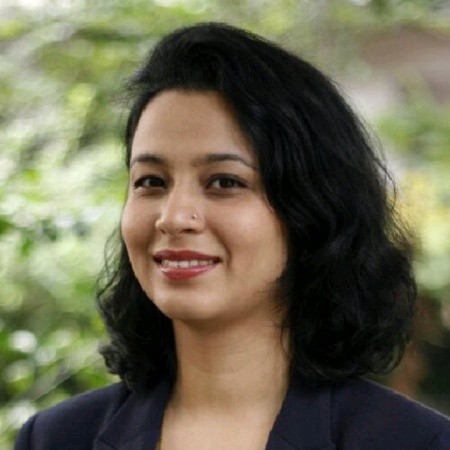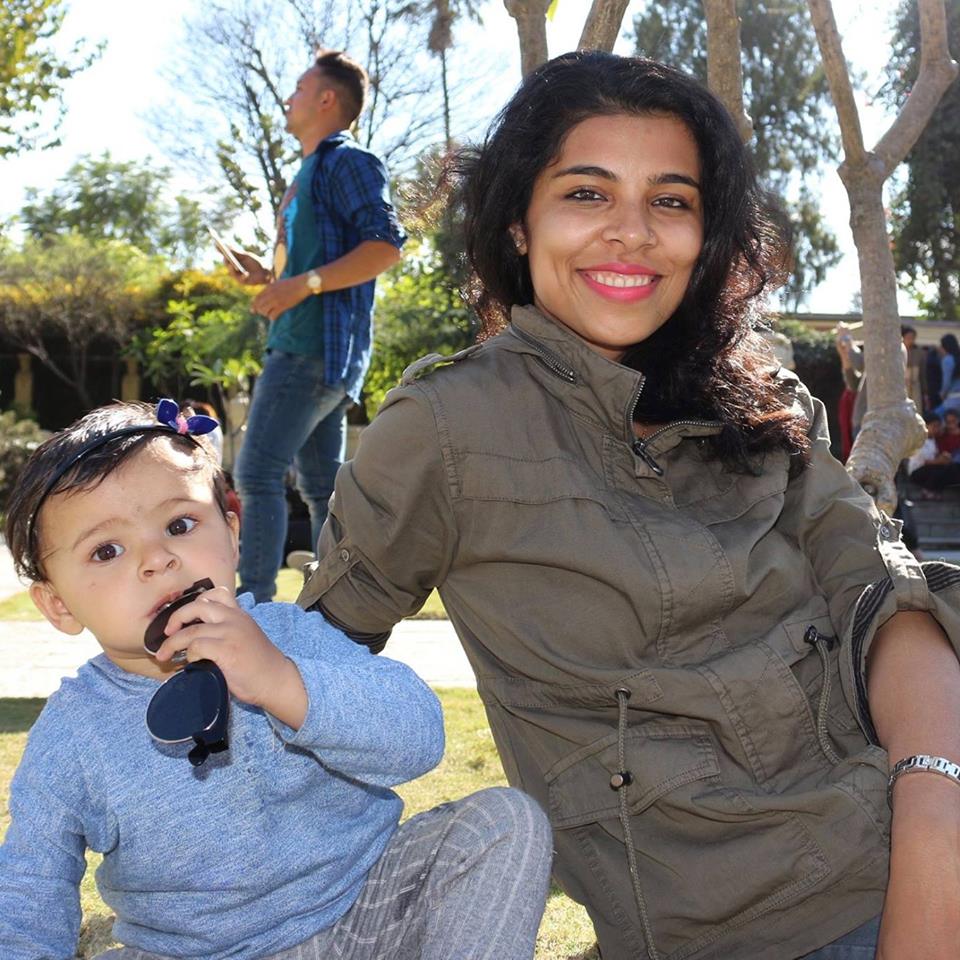Inclusive Education for People with Disabilities - Are We Doing Enough?
To create an online portal to track and map out implementation of inclusive policies in education for people with disabilities.
Goal of the Project
The goal of our project is to analyze whether the current government provisions in place regarding inclusive education for people with disabilities have been appropriately designed and implemented. We plan to achieve this by initiating an advocacy campaign through an online portal.
Summary of the Project
In the first phase of our project, our analysis identified progress in terms of the
development of policies addressing this demographic, however, with major gaps in the design and implementation
of the policies.
Moreover, the lack of disaggregated data proved to be very difficult in
specifically assessing
the impact of each policy. We realize the need for disaggregated disability population data for a more effective
analysis of the current status.
We plan to advocate the need for data and research in this area. Our
project
plan is to create an online open data portal that will incorporate data from local and government sources, local
and regional organizations, research institutes and the general public. With sufficient data, we plan to map out
the specific provisions outlined in the policies to the progress towards SDG Goal 4: “Ensure inclusive and
equitable quality education and promote lifelong learning opportunities for all”.
Dashboard
Presentation Slide
Dataset Link:
Dataset
Limitations of the Project
Even with the review of the data collected from crowdsourcing, we cannot guarantee accuracy.
Areas where help is required
Technical support for a portal.
Additional Information
The dashboard needs update as we gather information from our primary survey.
Team Members

Jhamka P Gautam

Manisha Shrestha

Nishtha Rajbhandari

Sajani Lama
Impact of Credit Risk on Financial Performance: A Study of Commercial Banks of Nepal
To analysis the effects of credit risk on the banks’ profitability in Nepal, we have used descriptive statistics, correlation, and regression analysis.
Goal of the Project
To examine the effects of credit risk on the banks’ profitability in Nepal
Summary of the Project
This study examines the effect of credit risk on banks’ profitability. For the study purpose, five commercial banks over five years period (i.e. 2013/14 to 2017/18)listed at NEPSE based on Market Capitalization (As of 2019-04-30) have been selected using convenience sampling technique. The correlation results depict that there exists statistically significant negative relationship between NPL and banks’ Profitability (ROA). While other variables (NPL, CRR, CAR, LEV, and SIZE) have negative correlation with ROA, but not found significant. The regression results show that the CRR, CAR, and SIZE are found significant at 5% level. It shows that they have a statically significant effects on banks’ profitability (ROA). While NPL and LEV do not statistically significant effect on banks’ profitability (ROA).
Presentation Slide
Dataset Link:
Dataset
Limitations of the Project
This study is based on small sample size and limited independent variables. So, it can not be generalized.
Areas where help is required
Model Specification and Detail Econometric Analysis
Team Members

Bhim Prasad Gautam

Madhusudan Gautam

Ojeshwi Risal

Dr. Pawan Kumar Jha
Factors affecting Educational outcomes based on SEE result 2017
Factors affecting Educational outcomes: exploring the relation between education budget and teacher/student ratio in the SEE results
Goal of the Project
1. Exploring possible relationships between the different variables: provincial
education budget and teacher-student ratio.
2. Identify data gaps and field where data consistency is required
Summary of the Project
We are trying to explore the factors affecting educational outcome. Currently we are taking into account only two variables: education budget and teacher student ratio to observe their relation to educational outcome of students appeared in SEE.
Dashboard
Presentation Slide
Dataset Link:
Dataset
Limitations of the Project
We have considered only two factors that impact educational outcome. Also we have taken data of year 2017 only due to inconsistency of data availability and time constraints.
Areas where help is required
If data would be made available for different years
Additional Information
In first phase we explored the impact of gender and ethnicity on education outcome of grade 8 in Tulsipur municipality while in phase three due to unavailability of microlevel data in other municipalities we investigated other two factors: teacher-student ratio and provincial budget allocation on SEE outcome in year 2017.
Team Members

Abyaya Neopane

Anjita Parajuli

Chandni Singh

Utkrista Parajuli
What factors affect the happiness of a country? Can Nepal define its own happiness indicator?
Factors which are often seen as the standards of success for countries do not consider the happiness of people. So, this project tries to compare the factors such as cost of living, purchasing power index, monthly income, suicide rate to see its correlation with happiness index and explore the possible factors can accurately reflect happiness of people.
Goal of the Project
To understand the relationship of other factors that can influence happiness with the happiness index and research if Nepal can design its own indicator to measure happiness.
Summary of the Project
After performing regression, correlation and analytics comparing Happiness index with other indicators such as cost of living, purchasing power index, monthly income, suicide rate , here are the following conclusions we have derived:
- - The most developed countries had high Happiness Index, but the pattern varied for the less developed ones. In case of Nepal, even though the GDP remained largely constant over the years happiness was fluctuating.
- - We found no association between suicide rate and happiness index of the countries around the world.
- - Some of the factors like cost of living, purchasing power cost of living index, purchasing power index and monthly income are positively associated with happiness. Hence, using multivariate analysis of cost of living index, purchasing power index and monthly income has provided an opportunity to predict the happiness index of the countries that are not included in world happiness report.
Given the mixed results, there is a scope to define happiness measure according to the context of the specific countries. The way forward is to design an open portal where stakeholders interested in measuring happiness in Nepal can carry forward the research to figure out possible indicators to measure it
Dashboards
Google Colab
Google Colab 1
Presentation Slide
Dataset Link:
Dataset
Limitations of the Project
We could analyze various other factors to get a more rigorous analysis but due to time limitations and data constraint we have only considered certain factors and cannot fully predict what could be the other indicators to measure Happiness in Nepal.
Areas where help is required
We need support form statistician for more rigorous analysis and technology expert to design portals.
Additional Information
We would appreciate your feedback and perspective to carry this project forward.
Team Members

Sanhita Sahasrabudhe

Soni Khanal

Sarita Sharma

Sulav Nepal
Analysis of Budget Allocation and Spending of the Provinces in Nepal
We are creating a interactive open data web portal, that shows the province level budget allocation and spending. This web portal will also contains the blogs with analysis. We will be providing the download feature for the budget sheets which are in very unstructured way now. Users will get easy access to the province level budget, analyze it by using different filters charts. We will be trying to use the available data and machine learning tools to predict the budget for the coming fiscal year.
Goal of the Project
To make people aware of on where and how provinces are spending their budgets. Make provinces more accountable
Summary of the Project
There is a gap on province level budget data and spending, even though the data is public those are not easily available and are in a very raw format. People should know what the provinces are planning. So we will be building a open data portal for the province level budget.
Dashboards
Presentation Slide
Dataset Link:
Dataset
Limitations of the Project
We only have a sample data for our sample output As provinces in Nepal has been functioning for two years, we will only have the budget for two years. The Data that is available is not structured, And this will be only the province level budget, we wont incorporate the local level budget.
Areas where help is required
We need developers to help us to create a data repository, by scrapping the PDFs into machine readable format and translate the Nepali text into English. We need financial and technical help on creating maintaining and sustaining the portal.
Team Members

Ananda Gautam

Nitee Shrestha

Nishant Khanal
Empowering women: Does female household ownership affect literacy rate?
Little or no education in women is seen to affect women in many ways. They
are either married early and bear stunted children, live in poverty, suffer
domestic and workplace violence, placed in brothels or are made handicapped
and left in the streets to beg.
Imparting education to women has proven to have a positive effect on
mitigating the above mentioned issues (Source:
https://www.worldbank.org/en/news/press-release/2014/05/14/education-key-role-women-girls-communities-report)
Over the years, the government of Nepal has been introducing several
proactive measures to empower women by promoting women’s access, ownership
and control over land and
property.(Source:https://www.iom.int/news/securing-womens-land-and-property-rights-nepal
).
This project aims to check if there is a correlation between female
household ownership and literacy rate. The project looks at provincial
indicators on literacy rates and female household ownership, which
contribute to sustainable development goals (SDG) 4: Ensure inclusive and
equitable quality education and promote lifelong learning opportunities for
all, and SDG 5: Achieve gender equality and empower all women and girls
respectively.
During the first phase of the data literacy training, the team used data on
the aforementioned indicators for five development regions referring to the
Nepal census data and National Living Standards Survey data for 2011 to test
the hypothesis, and deduced that a very low positive correlation exists
between the two variables. The team also looked at the data on literacy
rates vs household income for the different development regions of Nepal.
The team reached to a conclusion that there is a very low positive
correlation between the new variables as well.
In the third phase of the project, the team revisited the problem using
provincial level data (Source: WorldBank’s data in SDGs) on the two
indicators - female household ownership, and literacy rate, using a
different set of tools introduced in the third phase: Tableau for data
visualization and Python for data processing and statistical calculations.
The team concluded that there is a very low positive correlation between the
two variables.
More variables possibly play an important role in improving literacy rate
rather than just ensuring women’s ownership of property (land or house).
Steps to increase women inclusion, equality and literacy rate could possibly
be supported by ensuring students and parents be provided incentives to
attend and stay in schools. Meal programmes, and ensuring toilets and proper
hygiene specially for girls could possibly help increase literacy rates.
In the future, evidence based advocacy though collection of primary and
secondary data and its adoption in national policy may largely bring about
changes. Methodology that could be used for primary data collection be
stratified random sampling followed by simple random sampling.
Goal of the Project
To compare female household ownership with literacy rate. To check whether women's ownership of household helps in achieving improved literacy rate.
Summary of the Project
This project aims to check if there is a correlation between female household ownership and literacy rate. The project looks at provincial indicators on literacy rates and female household ownership, which contribute to sustainable development goals (SDG) 4: Ensure inclusive and equitable quality education and promote lifelong learning opportunities for all, and SDG 5: Achieve gender equality and empower all women and girls respectively.
Dashboard
Presentation Slide
Dataset Link:
Dataset
Limitations of the Project
Panel data could possibly provide help to us in making a better claim. Availability of few datasets was a major limitation of the project. More explorations on the claim can be made with larger data sets. Time limitation for primary data collection was another limiting factor.
Areas where help is required
There are mainly threefold requirements. They are: Human resource who would
be needed to acquire primary and secondary data. Incentives and Awareness
Generation Financial support for both field activities as well as
monitoring, evaluation and Learning (MEL) Budget for Kathmandu valley i.e
Kathmandu, Lalitpur and Bhaktapur taking 3 VDC from each district. Human
Resource - Per diem Field workers (Data collection) Co-ordinator Trainers
Data analyst Auditor Transportation Co ordinator Field worker Equipment
(Laptop, recorder, Camera, printer, Multimedia projector, Screen)
Information, education and communication(IEC) materials Incentives for
parents and mid-day meal program
Stationary Miscellaneous
https://docs.google.com/document/d/1i4aVVFbZ6HmtkDztO8tQ8vxotUve8rq4WNTUeZf4vL8/edit#
Link to google form sample questionnaire
https://docs.google.com/forms/d/1Fu9utdyG0uaIqNJyV8PjCAhAvnrdDCsmOIUTDx135qc/edit
Link to sample consent form
https://docs.google.com/document/d/1GHhPXvQ7Zx5duMz2JMzwrXuywamZnih59Y1M86YHkQg/edit
Team Members

Pranita Upadhyaya

Shreya Bhandari

Sunil Kumar Jha

Tirupati Pariyar

Utsav Maden
Predictions based on Tourism Stats
To analyse the tourism data of past 20 years (1998 to 2018)
Goal of the Project
To analyse past tourism data and present the findings in a blog portal to successfully initiate the discussion around the strategy and marketing limitations and provide suggestions based on the facts
Summary of the Project
For the vision of Nepal Government: Visit Nepal 2020, proper study and analysis of available data is very important to to make better evidence based decisions to successfully increase the total number of tourists and their average length of stay. Hence the project offers the detailed analysis of tourism data with further plans which will hopefully help in effective planning of visit Nepal 2020.
Presentation Slide
Dataset Link:
Dataset
Limitations of the Project
- 1. Availability of raw data from the Nepal Tourism Board
- 2. Availability of marketing plan and budgeting data from tourism board for past years to analyze it's effectiveness and make suggestions based on external marketing data.
Areas where help is required
Need help with following data collection:
- 1. Raw Data
- 2. Marketing Plan
- 3. Financial Data
Team Members

Bikin Ghimire

Kamlesh Kumar Yadav

Ojeshwini Singh

Sunita Basnet
Women's Representation in Parliament.
Elections and political leadership is a male dominated enterprise in almost all parts of the world. Though woman seem to possess all desirable qualities just the gender difference between the two groups tend to act as the main factor that discourages woman to participate in political issues. Gender equality in political leadership is one of the things that have not been achieved yet. There has been a lot of studies carried out in the past on the similar issue and majority of them are seem to have been done in the African countries where this is seen to be a major problem. Some of the other researches have shown that this problem also exists in the Nordic countries. There are also seven countries in the world that do not have any woman parliamentarians. The main purpose of this study is to identify the factors that affect woman’s participation in political leadership in Nepal. Demographic factors like education, religion and marital status influence women’s participation in political leadership (Khan 2010). One of the past study conducted in Africa has found out that marital status and education level of woman are the main two factors that has affected the woman’s participation in political leadership. Since woman are lesser involved in jobs that fetches them salary they tend to be economically disadvantaged which in turn hinders their chances of ascending to political office. Cultural factors, patriarchy and public opinion have also been identified as some of the other important factors that affects woman’s participation in political leadership. In addition gender based electoral violence in form of physical harm; sexual harm and psychological harm directed at women as they campaign for political office have also been found to discourage women from running for political office. In one of the study conducted in the west it has been seen that more women are now running for and being elected to national parliaments than ever before and a record number of woman hold executive positions within the national governments. While women have made substantial gains in wielding political influence women are still found to participate less in formal politics across a variety of Western nations.
Goal of the Project
The main goal of the project is to identify the main factors that motivates woman to participate in political leadership. Out of all the factors that will be identified, correlation and regression will be carried out in order to find out the main factor/s that will have the strongest effect on the dependent variable (woman’s participation in the electoral process). So far the study has been able to consider only the literacy rate of woman as one of the factor that influences woman’s participation but the project intends to find out which other factors affect this and which factor among the many has the strongest effect.
Summary of the Project
The project titled 'Women representation in parliament' has pondered upon the factors that are enabling and discouraging the women representation in the parliament. Based on the secondary sources of data available in the websites of the Election Commission, Ministry of Education, National Planning Commission and United Nations Development Programme (UNDP), we have analyzed the trend of representation of women in the parliament since the election of 1991, after restoration of the democracy. From the literature reviews we can consider the illiteracy, lack of ownership in wealth, excessive responsibilities in domestic works among others are the major factors for low representation, we have analyzed the trend of women representation in different elections from 1991 to 2017. The Constitution of the Federal Democratic Republic of Nepal has provisioned 33 per cent representation of women. Beyond that, in some of the provinces there is sound representation of women. We've looked into the Human Development Index of those provinces where representation is fairly high. Provinces that are ranked at the top position in terms of HDI has a positive correlation with women representation. We have analyzed the correlation of different indicators of the HDI like, literacy rate, women literacy rate and other indicators that measures social progress. We've used different tools to analyze and visualize the data, namely, python and tableau. The whole objective of the project is to identify the enablers to increase the women representation in the parliament. Through which we can expect the equal participation of women in decision making.
Dashboard
Presentation Slide
Dataset Link: Dataset
Limitations of the Project
Given a certain deadline for the completion of the project, time might be a major constraint since this is a national survey and there might not be sufficient time to interview potential respondents in all the province of the country. Since our study has two groups of target respondents, one being woman who are already a part of the political offices and the other group are the woman who still aspire and wish to participate in the electoral process, it might be quite difficult for the researchers to tap, identify and interview all potential respondents. Third important constraint will be the unavailability of the data. Literacy rate is the only factor that has been studied so far but according to literature review of several studies conducted in all parts of the world it has been seen that there are many factors other than literacy level that affects woman’s participation in the electoral process. Data on other demographic factors such as age, marital status, economic efficiency need to be further collected and analyzed in order to check their effect on woman’s participation. Unavailability of appropriate secondary data on these mentioned factors will make the study a bit difficult and the findings ineffective. Hence, the study further needs to focus on primary data that will be collected through the female participants of all the provinces.
Areas where help is required
Further Data Collection on other variables (demographic-marital, age, income, religion, ethnic group, geographic scope), data scientist and financial resources.
Team Members

PushpaRaj Acharya

Sunanda Sharma

Ujwal Adhikari
Analysis on Low total fertility rate in regards to Nepal
We would like to analyze the factors affecting the Total Fertility Rate (TFR) with regards to Nepal
Goal of the Project
To bring the issue and factors affecting the low TFR into limelight
Summary of the Project
Analysis was done correlating TFR with female literacy , infant mortality and female employment .Limitations of the work were highlighted and why the issue needs to be raised was mentioned.
Presentation Slide
Dataset Link:
Dataset
Limitations of the Project
- 1) Others Factors affecting low TFR has not been identified and analyzed
- 2) Unavailability of large secondary data to do thorough analysis
- 3) Time constraints to do a thorough research
- 4) Lack of required resources for primary data collection
- 5) The issue itself is not in major focus for government or non government agencies
Areas where help is required
- 1) Data Scientist to study other major factors affecting low TFR
- 2) Campaign Manager to better highlight the issue among stakeholders.
Team Members

Balkrishna Khadka

Bikesh Gautam

Kalyan Adhikari

Subash Pandey
Access to Education and Health, a way to reduce Inequality
An analysis of gender and ethnicity inequality based on some parameters of education and health with the aim to uncover the situation to rest of ecosystem working on inequality issue.
Goal of the Project
Paper has visualized the inequalities prevailing in Nepalese education, health sector. Even though Nepalese society has heterogeneity in resource allocation, access to finance, political reach, wealth distribution and so on, we further explored further on gender, ethnicity and geographic location. We expect to develop a dashboard to visualize the situation of SDG goal number ten on reduction of inequality. The portal would be useful for government and other agencies to intervene for reducing inequality and create social justice.issue.
Summary of the Project
Paper has tried to review the status of some of parameters education and health sector in relation to goal number ten, Reduced Inequality of SDG. We have aimed to create a dashboard that would visualize the inequality prevailing in education and health sector on the basis of gender, ethnicity and geography of Nepal. The paper has sort out some sectors that need immediate intervention to reduce inequality but it has not provided the possible suggestions.
Dashboard
Presentation Slide
Dataset Link:
Dataset
Limitations of the Project
Among various parameters in defining education sector, we have considered illiteracy rate of males and females in provinces of Nepal, Education attainment of different gender. For analysis of health sector, provincial data on mortality rate, skilled birth rate are analyzed. Apart from these, province wise child marriage, gender wise employment rate and ethnicity & gender wise political representation in latest election has been analyzed. We have limited our study only to visualize the context creating further space for government and other agencies to work on or intervene in particular sector for lowering gap.
Areas where help is required
We require help from statisticians and experts in data visualization and consultation of World Bank team for further development of policy briefs, and obvious coordination in implementation phase of the project. If any agency show interest with adequate budge in intervening the sector with concrete action, we could co-work with them.
Team Members

Prakriti Dhungana

Srawan KC

Sunil Pokharel

Tilak Pathak
Government Expenditure and School Dropout rate in classes 8-10
We tried to know whether Government Investment ( Expenditure) in education has some effect in the dropout ratio of class 8,9,10.
Goal of the Project
Goal is to find out Enrollment and Dropout Ratio and Government budget investment relationship.
Summary of the Project
Government investment in education is decreasing and that has effect in enrollment of the students, because enrollment has not significant increased, the dropout of the students specially in class 8 and 9. Where as dropout of class 10 has decrease.
Presentation Slide
Dataset Link:
Dataset
Limitations of the Project
- Limitation of the data, We could only collect data of year 2073,2074 and 2074 and data of grade 8 , 9 and 10 only.
- Limitation of Analysis, Analysis can not explain the reason of dropout.
- Limitation of Government Budget investment sub-heading
- Limitation of Time
Areas where help is required
It will help researchers, academicians and students who wants to know the status of secondary level education in Nepal
Team Members

B.P Sha

Sanjaya Pudasaini

Santona Devkota K.C

Swarup Acharya
Improving Women's Access to Finance
Our project attempts to leverage Female Community Health Volunteers in improving access to finance of women in rural Nepal
Goal of the Project
Increased Access to Finance to Women
Summary of the Project
Our project develops a data logging app given to FCHVs who will use it to survey the women household regarding their reach to finance. And use that app to register new bank accounts. On doing so they get commission from bank thus making the project sustainable
Dashboard
Presentation Slide
Dataset Link:
Dataset
Limitations of the Project
Our project is in initial stage and is limited with technical and financial overheads
Areas where help is required
We can use better app developer and data technician
Team Members

Anish Bhurtel

Anupama Pant

Dipesh Karki

Prajjwol Lakhey
Risk Analysis among Migrant Workers from Nepal and Ways to ensure Decent Work
This project has analyzed the data of migrant workers from Nepal and the initiative that can be taken to ensure decent work in foreign countries.
Goal of the Project
We want to create a portal where we want to visualize the data of labour migrants, remittance data, death toll and injury toll for respective migrant countries. We want to analyze the bilateral agreement signed by countries for labour work and also make recommendations to sign bilateral agreement in scenario of certain countries to ensure decent work for migrant workers. We also want to make recommendation to the provincial and federal government to implement skills mapping as per the countries need for skilled labours and conduct training programs for decent work of migrants in respective countries for they are trained for.
Summary of the Project
As a part of our first phase, we analyzed data gathered from Labor Migration for Employment and Centre for the Study of Labour and Mobility - CESLAM’s official website. We found out in proportion to total migrant workers migrating to different countries for work, death is high in the country where higher number of workers are moving. Despite this high number, government still not signing any bilateral agreement/ MOU with the country where death toll seems to be high. In the second phase, we are using all the learning of the training in creating a user friendly web portal where the existing or potential migrant workers can have access to the current scenario of labor market in different countries. Our dashboard is like a template for our web portal where we reside detailed information regarding the number of migrant workers moving to different destination countries, remittance flow to Nepal, challenges and death along with cause of death of the workers in those countries. Besides, we have also thought of adding a News release where we would announce all the news releases from the government or any official sources working for labor migrants like World Bank, CESLAM.
Dashboard
Dataset Link:
Dataset
Limitations of the Project
We have used the data till 2016/17 only and some of them are till 2014/15 this is due to lack of online availability of recent data. Similarly, time constraint is also one of the limitations due to which we were not being able to complete our project at our best.
Areas where help is required
We aim to create a web portal which is public and useful to the existing and potential migrant workers. One thing that is quite challenging is to hover our data year-wise slider for which we are looking help. Additionally, we need information to update our web portal for this we might also need the help of any media house. At the end basically we are creating a portal for the user who can access all the information regarding the labor market so that the users do not have to check different files for accessing information of their interest.
Team Members

Bikal Rai

Gaurav Kandel

Nisha Adhikari

Pratikshya Sharma

Shyam K. Thapa
Ensuring Safe Destination for Female Labour Migrants
This project will focus on understanding the data gap related to female migrant workers and their destination country.
Goal of the Project
Creating safer foreign employment for female migrant workers.
Summary of the Project
This project will understand the current status of the female migrant worker in terms of their choice of destination, uses of channel and difficulties they face during their foreign employment. It will also help to bridge the data gap for female foreign migrants workers to access information on their destination country and risk associated with that. We look forward to facilitating the foreign workers to rely upon formal and dependable sources to ensure a safer working environment.
Dashboard
Presentation Slide
Dataset Link:
Dataset
Limitations of the Project
- - Creditability
- - In-depth understanding of the topics
Areas where help is required
Data Scientist, Qualitative data experts and Quantitative data experts
Team Members

Alina Chhantel

Hem K Shrestha

Roshee Lamichhane Bushal

Sijal Pokharel